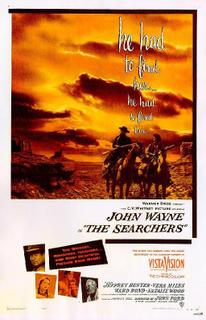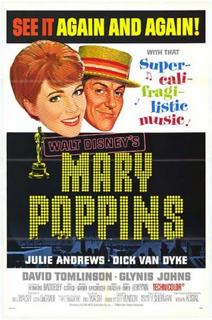The Maltese Falcon
 Upon his arrival in Hollywood, Humphrey Bogart had essentially been reduced to playing bad guys, appearing in countless Warner Bros. stock company productions, usually in gangster movies. He had significant supporting roles in "Angels With Dirty Faces" and "The Roaring Twenties" and towards the latter end of the 1930's finally cracked through with some starring roles, in "The Petrified Forest" and "High Sierra", but both of these roles were ambiguously heroic at best. It was not until the 1941 production of Dashiell Hammett's hard boiled detective novel, "The Maltese Falcon" that Bogart was elevated to full blown leading man status. As brilliant and bitter detective Sam Spade, Humphrey Bogart would create his best and most vivid screen persona, until he eclipsed it a year later in "Casablanca" and then traded off it as Phillip Marlowe in "The Big Sleep". But it was here first that Humphrey Bogart's star first exploded into the realm of Hollywood royalty.
Upon his arrival in Hollywood, Humphrey Bogart had essentially been reduced to playing bad guys, appearing in countless Warner Bros. stock company productions, usually in gangster movies. He had significant supporting roles in "Angels With Dirty Faces" and "The Roaring Twenties" and towards the latter end of the 1930's finally cracked through with some starring roles, in "The Petrified Forest" and "High Sierra", but both of these roles were ambiguously heroic at best. It was not until the 1941 production of Dashiell Hammett's hard boiled detective novel, "The Maltese Falcon" that Bogart was elevated to full blown leading man status. As brilliant and bitter detective Sam Spade, Humphrey Bogart would create his best and most vivid screen persona, until he eclipsed it a year later in "Casablanca" and then traded off it as Phillip Marlowe in "The Big Sleep". But it was here first that Humphrey Bogart's star first exploded into the realm of Hollywood royalty.Like any good hard boiled detective story, the plot is not what it first appears. Initially Spade and his partner are contracted to follow a man, a simple enough request in the private eye business. When Spade's partner turns up dead later that night while tailing the man however, Spade finds himself first suspected by the San Francisco police, and gradually gets drawn into a web of intrigue involving femme fatale Mary Astor as Brigid O'Shaughnessy and an assorted cast of characters, all of whom are desperately searching for the titular Maltese Falcon. As only a hard boiled detective can, Spade keeps everyone off of his back, while working to the bottom of the mystery. The deeper Spade digs the more he finds out about the lady he thought he was protecting, Ms. O'Shaughnessy, who it turns out has been frantically trekking across the globe, doggedly pursued by Kaspar Gutman, and his two henchmen Joel Cairo and Wilmer Cook. The falcon itself is a 16th century golden bird, studded with precious gems, but coated in a black enamel to distort its true value. Many have died tried to find this bird, and O'Shaughnessy and Gutman are two of the most ruthless people hot on the bird's trail, and it is just Sam Spade's luck that they turned up in San Francisco looking for it, the violence and intrigue netting Spade in the process. By the end of the film, a fake bird has been revealed, Gutman and his goons are bound for some new exotic location following a tip, and O'Shaughnessy is in the hands of the San Francisco police, via the hands of Sam Spade himself. As only Bogart can, he tells the prison bound O'Shaughnessy that he will wait for her, then casually goes back to sipping his gin and smoking his cigarettes, as if he kisses girls off to Alcatraz everyday.
The beauty of this film lies in its character work. Sam Spade and Rick Blaine might as well be the same character, just in different locations. Both are noble but loathe admit it. Both are extremely cynical and bitter, yet are bound to romantic deeds and actions. Both are tough and smart, playing multiple sides off of each other until a safe (for your's truly of course) resolution presents itself. The film too utilizes many of the same noirish elements that later turn up in "Casablanca", specifically smoky interiors and a brilliant use of darkness and shadow. Another notable similarity is the presence of Sydney Greenstreet and Peter Lorre, working together here for the first time. The duo would later appear in eight other films together, becoming a B movie odd couple duo, what with Greenstreet's imposing girth and Lorre's pitiful appearance. The weak link here however is Mary Astor as Brigid O'Shaughnessy. While she plays the damsel in distress part adequately, the few scenes she is required to carry as the femme fatale are not as convincing as say Barbara Stanwyck in "Double Indemnity" or Rita Hayworth in "Gilda". Physically both are more appealing, and both display the necessary backbone required for the part of a conniving, scheming woman. While Mary Astor does not ruin the film, even more remarkable considering this was John Huston's directorial debut, her presence does weaken it, however Bogart is in impeccable form, Dashiell Hammett's mystery is top notch (what else to expect from the man who also gave us Nick and Nora?) and the supporting cast is also perfect. For these reasons, "The Maltese Falcon" is an extremely worthy detective story, after all, it's "the stuff dreams are made of".



 Only in a Marx Brothers movie could a man named Rufus T. Firefly be president of a country. Only in a Marx Brothers movie would someone who looked like Groucho be president of a country. But that is the nature of the Marx Brothers. They took the inexplicable and played it for laughs, a full 40 years before irony and irreverance was a standard form of comedy. While most of their comedy was based on slapstick and word play (all of it funny mind you), when they really set out to lampoon a sacred institution, in this case politics, they proved themselves to be masters of satire and social humor. Rufus T. Firefly, for instance, insists he must go to war because "I've already paid a month's rent on the battlefield". He also instructs one of his subordinates to build trenches six feet deep so they won't need any soldiers. It is jokes like these that set the Marx Brothers apart from other, different comics of the time. Not to take anything away from the genius of Chaplin or Keaton, but their comedy was more predicated on emotion and pathos. The Marx Brothers could seemingly care less about making you cry, or think. All they wanted from their audience was laughter. All of their movies are funny, but in movies like "Duck Soup" and their other classic "A Night at the Opera", the Marx Brothers pushed the bar into the stratosphere, with countless jokes, gags, and pratfalls.
Only in a Marx Brothers movie could a man named Rufus T. Firefly be president of a country. Only in a Marx Brothers movie would someone who looked like Groucho be president of a country. But that is the nature of the Marx Brothers. They took the inexplicable and played it for laughs, a full 40 years before irony and irreverance was a standard form of comedy. While most of their comedy was based on slapstick and word play (all of it funny mind you), when they really set out to lampoon a sacred institution, in this case politics, they proved themselves to be masters of satire and social humor. Rufus T. Firefly, for instance, insists he must go to war because "I've already paid a month's rent on the battlefield". He also instructs one of his subordinates to build trenches six feet deep so they won't need any soldiers. It is jokes like these that set the Marx Brothers apart from other, different comics of the time. Not to take anything away from the genius of Chaplin or Keaton, but their comedy was more predicated on emotion and pathos. The Marx Brothers could seemingly care less about making you cry, or think. All they wanted from their audience was laughter. All of their movies are funny, but in movies like "Duck Soup" and their other classic "A Night at the Opera", the Marx Brothers pushed the bar into the stratosphere, with countless jokes, gags, and pratfalls.






